
views
Preparing to House Train Your Dog
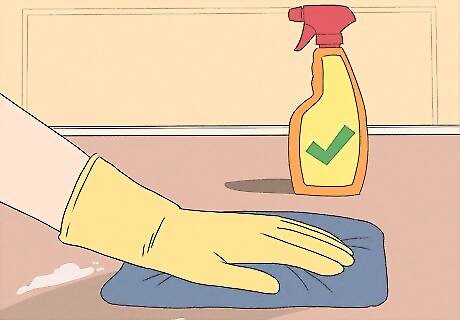
Get rid of residual odors in your home. Before you start your house training plan, you need to ensure that your home is free from urine stains and residual odors. Once you’ve gotten rid of any odors and stains, your dog will not be attracted to certain areas of the house to use as a potty. Purchase a black light and a pet odor remover from your local pet store. When it is dark, turn off all the lights and thoroughly inspect your home, floors and/or carpets, and furniture. The black light will reveal any old stains so you can effectively clean and remove them. There are many effective pet stain/odor cleaning products available on the market.

Assemble your supplies. Having your supplies on hand will make it easier for you to focus on house training your dog without needing to run to the store. Gather the following supplies: Wire crate: Get a good quality wire crate that is large enough for your dog to stand up, lie down and turn around in. Position the crate in a quiet (but not isolated) part of your home. Collar and leash Chew toys and squeaky toys
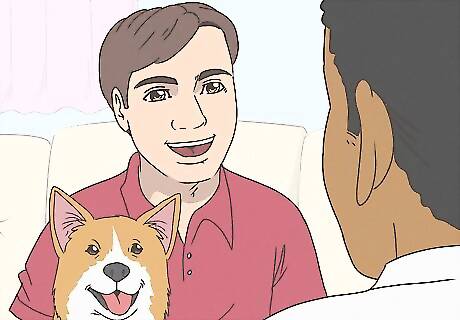
Arrange for help if you aren’t home during the day. In order to get your dog house trained in 10 days, you need to follow a strict schedule of potty breaks, meals, playtime, and crate confinement. If you can’t come home for certain parts of the day, then arrange a dog walker or pet sitter to visit your house to take care of the midday break. EXPERT TIP Sheri Williams Sheri Williams Certified Dog Trainer Sheri Williams is a Certified Dog Trainer and Behaviorist and the Owner of sheriwilliams.com, a business that specializes in teaching veterans how to turn their dogs into service dogs or emotional support animals to assist with PTSD. Based in the Los Angeles, California metro area, Sheri has over 20 years of dog training experience and also runs a general dog training practice specializing in rehabilitating dogs through positive reinforcement training techniques. She is certified by The Animal Behavior and Training Association. Sheri Williams Sheri Williams Certified Dog Trainer Become an expert through in-person training. To become skilled at dog training, it's helpful to do an in-person training program rather than learning online. Real-life experience working directly with the dogs and trainers is invaluable for picking up the nuances of dog behavior and training techniques.
Following a Consistent Routine

Follow a 24-hour schedule. In order to house train your dog in 10 days, you need to strictly follow a schedule. This will establish a routine for both you and your dog. Your dog needs to go out first thing in the morning, after meals and play times, and before bedtime. Every moment should be accounted for. This is a sample schedule for someone who is home all day: 7:00 a.m.: Wake up and take the dog outside. 7:10-7:30 a.m.: Free time in the kitchen 7:30 a.m.: Food and water 8:00 a.m.: Go out 8:15 a.m.: Free time in the kitchen 8:45 a.m.: Crate confinement 12:00 p.m.: Food and water 12:30 p.m.: Go out 12:45 p.m.: Free time in the kitchen 1:15 p.m.: Crate confinement 5:00 p.m.: Food and water 5:30 p.m.: Go out 6:15 p.m.: Crate confinement 8:00 p.m.: Water 8:15 p.m.: Go out 8:30 p.m.: Free time in the kitchen 9:00 p.m.: Crate confinement 11:00 p.m.: Go out and crate confinement overnight

Choose a designated spot for toileting. Select a place in your backyard that is suitable for your dog’s toileting. The base of a tree or a green patch of grass is ideal. Use this spot every time you take your dog to the potty. At a scheduled potty time, or when you recognize your dog’s cues for needing to relieve himself, take him outside to this spot. Use consistent language to refer to this place. For example, when your dog reaches this spot, say, “Go potty,” or use a similar verbal cue. Then your dog will associate this spot with toileting. Be sure to follow your city’s ordinances with regards to pet waste removal. If you are in a city and don’t have a good green space for your dog to toilet, make sure you have plastic bags to pick up the waste. If you live in a small space, such as a high rise apartment, you might need to use a dog litter tray in your apartment. This will give your dog a place to go inside.
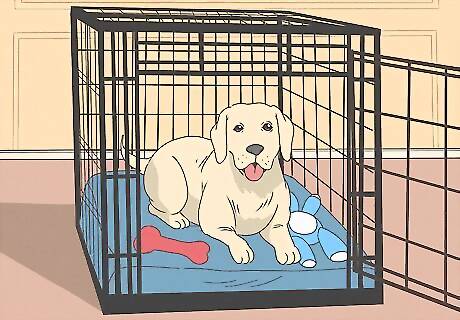
Make the dog’s crate a safe place. Your dog will stay in his crate for a few hours during the day, as well as overnight. Dogs like to have a small “den” to sleep in. A crate is a good place for the dog to feel safe. Make the crate comfortable, with a blanket, chew toys and squeaky toys. Don’t use the crate as a punishment. Otherwise, your dog will associate this place with fear or anxiety rather than safety and comfort.
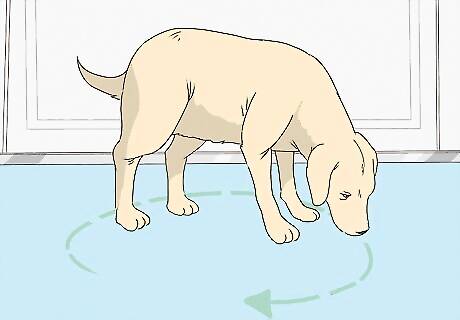
Learn your dog’s signs. Pay close attention to your dog so that you learn when he has to go. This might include the dog walking around stiffly or in circles, sniffing the floor like he’s searching for somewhere to pee, or letting his tail rest in a strange position. If your dog looks like he needs to relieve himself, take him out to his designated spot right away. Do this even if you’re not at your scheduled potty break.
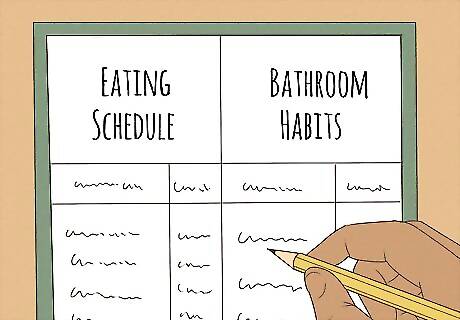
Keep track of your dog’s habits. Write down your dog’s eating schedule and bathroom habits. Note when your dog urinates and defecates. Note the exact time your dog eats and any other treats it is given during the day. Your journal will help you determine how long after eating and drinking your dog typically needs to relieve himself. You can use this information to adjust your schedule if necessary.
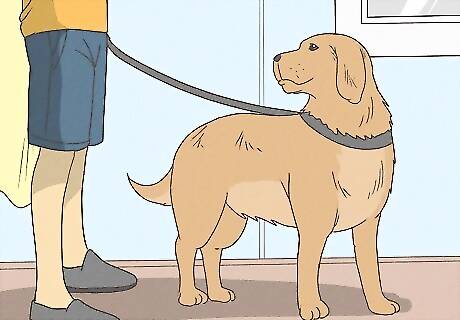
Keep a close eye on your dog at all times. You need to keep a vigilant eye on your dog whenever he is out of his crate. Even if he’s in the kitchen during his free time, you still need to watch him. This will ensure that you catch him before he has an accident. It’s imperative during this time that your dog associates toileting with going outside. You might consider tethering your dog to your waist with a leash when he is out of his crate. This way, you will be sure to keep him very close to you. You can track his movements more closely.
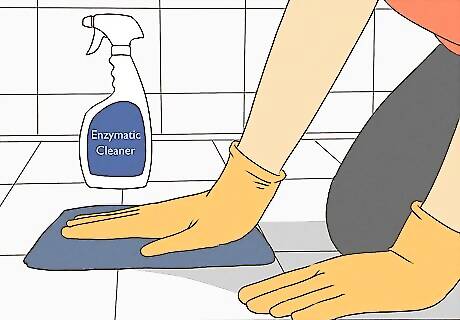
Clean up messes immediately. If your dog has an accident in the house, clean it up as soon as possible. You don’t want your dog associating relieving himself with being inside the house. Don’t use an ammonia-based cleaner. Urine has ammonia in it, so your dog might associate the cleaner’s smell with urinating. Instead, use an enzymatic cleaner on soiled areas. Don’t punish your dog for having an accident indoors.
Giving Praise to Your Dog
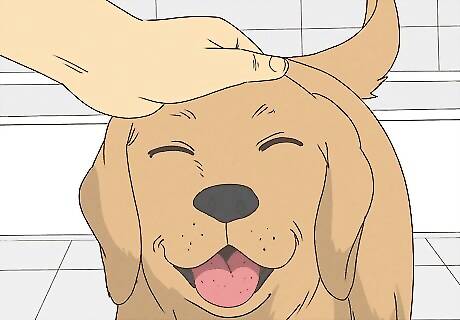
Give lots of praise. When your dog has relieved himself outdoors, give him lots of attention and pats. Say, “Good dog!” and other praise. Have a little celebration with your dog. This lets your dog know that its behavior is remarkable and deserves praise.

Make sure to time your praise appropriately. When your dog has finished relieving himself, give him praise right away. You want to be sure that he associates the praise with the action that he just did. Otherwise, he might get confused about what he’s being praised for.
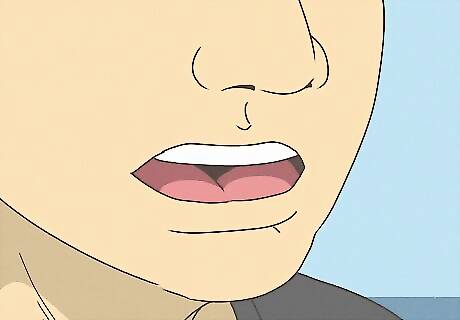
Keep your voice friendly. Don’t use a harsh tone with your dog while you’re house training him. You don’t want him to feel scared or anxious about going outside or relieving himself. Don’t yell at your dog if he has an accident indoors.
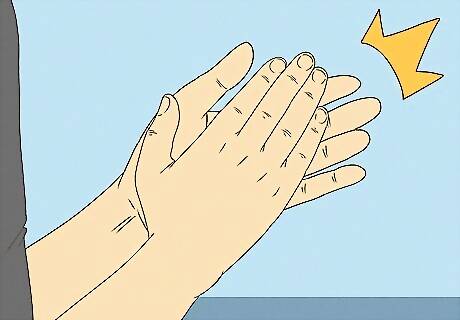
Don’t punish your dog for accidents. Your dog is learning how to follow your instructions. Be patient with him. Don’t rub his face in his waste. Don’t yell or shout at your dog. Don’t hit your dog. If you’re not patient and friendly, your dog may associate fear and punishment with toileting. If you catch your dog in the middle of an accident, make a loud noise or clap to startle him. Then he will stop urinating or defecating, and you can take him outside to finish up.




















Comments
0 comment